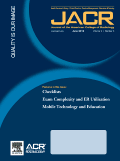
Journal of the American College of Radiology
Scope & Guideline
Transforming Patient Care with Cutting-Edge Findings
Introduction
Aims and Scopes
- Clinical Practice and Quality Improvement:
Research articles focusing on enhancing imaging quality, improving patient outcomes, and optimizing radiology workflows through evidence-based practices. - Artificial Intelligence in Radiology:
Studies exploring the implementation, efficacy, and ethical implications of AI technologies in diagnostic imaging and decision-making processes. - Health Policy and Economics:
Investigations into the impact of health policies, reimbursement models, and economic factors affecting radiology practice and patient care. - Education and Training:
Contributions aimed at improving radiology education, including innovative teaching methods, mentorship programs, and curriculum development. - Health Equity and Social Determinants:
Research addressing disparities in access to imaging services and the role of social determinants of health in patient care. - Global Health and Community Outreach:
Articles that discuss radiology's role in global health initiatives and strategies for improving access to imaging in underserved populations. - Patient-Centered Care:
Research focusing on enhancing communication with patients, improving their understanding of imaging processes, and ensuring patient engagement in care decisions.
Trending and Emerging
- Artificial Intelligence and Machine Learning:
A significant increase in research related to the application of AI and machine learning in radiology, focusing on improving diagnostic accuracy and workflow efficiency. - Health Equity and Disparities:
A growing emphasis on understanding and addressing health disparities in imaging services, with research aimed at improving access for marginalized populations. - Value-Based Care Models:
An emerging trend towards evaluating the effectiveness of value-based care in radiology, emphasizing cost-effectiveness and patient outcomes. - Telemedicine and Remote Consultations:
Research exploring the effectiveness and feasibility of tele-radiology and virtual consultations, particularly in response to the COVID-19 pandemic. - Patient-Centered Approaches:
An increasing focus on research that enhances patient engagement, communication, and satisfaction in the radiology experience. - Global Health Initiatives:
An emphasis on the role of radiology in global health, particularly in addressing healthcare access and quality in low-resource settings.
Declining or Waning
- Traditional Diagnostic Radiology Techniques:
There seems to be a decrease in publications focused solely on conventional imaging methods without the integration of newer technologies or multidisciplinary approaches. - Basic Radiology Research:
Studies that do not incorporate clinical applications or real-world implications are becoming less frequent, suggesting a preference for research that directly impacts patient care. - Single-Specialty Focus:
There is a diminishing emphasis on research that exclusively targets one subspecialty in radiology, as there is a growing trend towards interdisciplinary and collaborative approaches. - Static Guidelines Without Updates:
Research that merely reiterates existing guidelines without providing new insights or adaptations to changing clinical practices appears to be less prioritized.
Similar Journals

ANNALS ACADEMY OF MEDICINE SINGAPORE
Transforming clinical insights into impactful practices.ANNALS ACADEMY OF MEDICINE SINGAPORE is a reputable journal dedicated to the field of medicine, published by the Academy of Medicine, Singapore. With an E-ISSN of 2972-4066, this journal has been an influential platform since its inception in 1973, aiming to disseminate high-quality research and clinical findings pertinent to both local and international audiences. Currently ranked in the Q3 quartile in Medicine (miscellaneous), it holds a commendable 83rd percentile in Scopus rankings, indicating its significant academic contribution within the competitive landscape of medical literature. Although the journal operates on a traditional subscription-based model, it continues to provide access to critical insights that serve not only researchers but also healthcare professionals and students engaged in the ever-evolving medical sector. As it approaches its comprehensive publication mark in 2024, ANNALS will continue to focus on enhancing global healthcare discourse, making it an invaluable resource for those committed to advancing medical knowledge and practice.
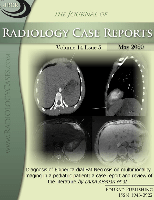
Journal of Radiology Case Reports
Fostering Collaborative Knowledge in Diagnostic ImagingThe Journal of Radiology Case Reports is a pioneering open-access journal dedicated to the publication of original case reports in the field of radiology, providing a crucial platform for the dissemination of valuable clinical insights and advancements in diagnostic imaging. Published by EDURAD since 2008, this journal aims to bridge the gap between clinical practice and ongoing research by showcasing unique cases that can enhance diagnostic accuracy and patient care. With an ISSN of 1943-0922, the journal is committed to excellence, evidenced by its current ranking in the Scopus database, where it stands at position #253 among 333 titles in the field, corresponding to a 24th percentile. The journal is indexed in notable databases and features an HIndex reflective of its ongoing contribution to medical literature. Researchers, professionals, and students can access insightful articles covering diverse case scenarios, thus enriching their knowledge of medical laboratory technology and enhancing their expertise in radiology, nuclear medicine, and imaging. The journal not only provides a wide reach through its open access model but also encourages collaborative research efforts, fostering the rapid circulation of case-based knowledge essential to the evolving landscape of radiological science.
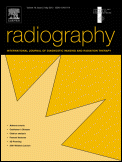
Radiography
Innovating Imaging for Better Patient OutcomesRadiography is a premier academic journal published by ELSEVIER SCI LTD that focuses on the vital disciplines of radiology, nuclear medicine, and imaging technology. With an ISSN of 1078-8174 and an E-ISSN of 1532-2831, this journal has earned an impressive reputation, consistently ranking in the top quartiles across multiple categories in the 2023 Scopus rankings, including Q1 in Assessment and Diagnosis and Q1 in Research and Theory. Spanning decades of research from 1995 to 2024, Radiography provides a platform for cutting-edge studies, innovative techniques, and clinical advancements, making it essential reading for researchers, healthcare professionals, and students engaged in the fields of radiological sciences. Operating from the United Kingdom, and while not an Open Access journal, it offers a broad array of access options through institutional subscriptions, ensuring that critical research is available to stakeholders in the health professions. The journal's focus on both theoretical and practical aspects further underscores its role as a key resource in enhancing diagnostic practices and improving patient outcomes in the healthcare industry.

Ochsner Journal
Innovative research meets clinical excellence.Ochsner Journal is a distinguished scholarly publication dedicated to advancing the field of medicine, with a focus on innovative research, clinical practice, and education. Published by OCHSNER CLINIC in the United States, this open-access journal has been a pivotal platform for medical professionals since its inception in 1999. With an ISSN of 1524-5012 and an E-ISSN of 2831-4107, the journal fosters a collaborative environment for the dissemination of groundbreaking studies and insights across various medical disciplines. Notably, in the 2023 Scopus rankings, it holds a commendable position, ranked #234 out of 636 in the General Medicine category, placing it in the 63rd percentile for quality and impact. Spanning multiple converged years, the journal encourages contributions that align with its objective to enhance patient care and promote evidence-based practice. With its open-access model, the Ochsner Journal ensures that its research is readily available to a global audience, thus supporting education and knowledge-sharing within the academic and clinical communities.
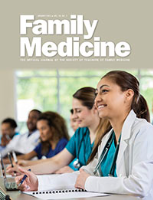
FAMILY MEDICINE
Shaping the Future of Family Medicine TogetherFAMILY MEDICINE is a prestigious peer-reviewed journal published by the SOC TEACHERS FAMILY MEDICINE, dedicated to advancing the field of family practice. With an ISSN of 0742-3225 and an E-ISSN of 1938-3800, this journal serves as a vital resource for researchers, healthcare professionals, and students involved in family medicine. Founded in 1985, it has consistently contributed to the growth of knowledge in this critical area, showcasing a wide range of original research, reviews, and practical applications. Recognized for its impact, the journal holds a Q2 quartile ranking in Family Practice, placing it in the top tier within its category, and ranks 22nd out of 56 in the Scopus database, reflecting its influence and relevance. While the journal operates under a subscription model, it remains committed to providing high-quality discourse and insights that shape the practice of family medicine. With a focus on current issues and evidence-based practices, FAMILY MEDICINE continues to be an essential publication for those dedicated to improving patient outcomes and advancing the field.
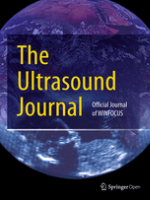
Ultrasound Journal
Empowering the Medical Community with Open Access ResearchUltrasound Journal, published by Springer, stands as a premier platform for disseminating cutting-edge research in the fields of radiology and ultrasound technology. Since its inception, this reputable journal has embraced Open Access principles, making significant contributions to the global exchange of knowledge since 2012. With an impressive Q1 ranking in both Radiological and Ultrasound Technology and Radiology, Nuclear Medicine and Imaging, it holds a notable position at the intersection of healthcare and technological advancement, reflecting its impact in the rapidly evolving medical landscape. The journal is recognized within the Scopus database, ranking 14th out of 47 in the health professions category, placing it in the 71st percentile overall. Addressed in the United Kingdom with a focus on rigorous peer-reviewed articles, the Ultrasound Journal seeks to unite researchers, practitioners, and scholars dedicated to improving diagnostic imaging and patient care through innovative ultrasound research and applications. For those who aim to stay at the forefront of this dynamic field, the Ultrasound Journal is an indispensable resource.

Egyptian Journal of Radiology and Nuclear Medicine
Transforming Discoveries into Clinical ExcellenceThe Egyptian Journal of Radiology and Nuclear Medicine, published by Springer, is a premier open access journal that has provided valuable insights and advancements in the fields of radiology and nuclear medicine since its initiation in 2010. With an E-ISSN of 2090-4762, this journal is dedicated to bridging the gap between research and clinical practice, allowing for the dissemination of high-quality research to a global audience. Situated in Germany, it enjoys a robust reputation in the academic community, evidenced by its categorization in the Q3 quartile for 2023, as well as its Scopus ranking, where it holds a position of #225 out of 333 in the domain of Radiology, Nuclear Medicine and Imaging, placing it in the 32nd percentile. The journal's open access model ensures that researchers, professionals, and students can freely access innovative studies, reviews, and case reports that discuss the latest methodologies, technological advancements, and clinical outcomes in radiology and nuclear medicine. As it looks toward its converged years spanning from 2010 to 2024, the Egyptian Journal of Radiology and Nuclear Medicine continues to be an essential resource for advancing knowledge and fostering ongoing collaboration in these critical fields.
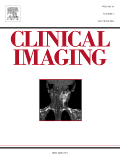
Clinical Imaging
Pioneering Discoveries in Radiology and Nuclear MedicineClinical Imaging, published by Elsevier Science Inc, is a renowned journal dedicated to the field of radiology, nuclear medicine, and imaging. With an ISSN of 0899-7071 and an E-ISSN of 1873-4499, this esteemed publication has established its significance in advancing imaging science since its inception in 1989 and continues to make impactful contributions to the discipline through 2024. The journal holds a prestigious Q2 ranking in the category of Radiology, Nuclear Medicine, and Imaging, reflecting its critical role in bridging research and clinical practice. Currently ranked #113 out of 333 by Scopus, with a notable 66th percentile, it offers a platform for disseminating high-quality research, reviews, and case studies that inspire innovation and enhance imaging techniques. Although it primarily functions as a subscription-based journal, it remains dedicated to accessibility and the dissemination of pivotal findings that inform both academia and clinical settings. Clinical Imaging is essential for researchers, professionals, and students alike, offering insights that shape the future of diagnostic imaging.
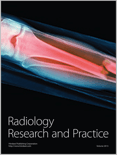
Radiology Research and Practice
Connecting researchers and practitioners in the realm of radiology.Radiology Research and Practice is an esteemed journal dedicated to advancing the field of radiology through pioneering research and innovation. Published by HINDAWI LTD, this journal has been an Open Access platform since 2011, ensuring that cutting-edge findings are accessible to a global audience. With an impressive impact reflected by its Scopus rankings—Rank #44/284 in Medicine: Radiology, Nuclear Medicine and Imaging and Rank #9/49 in Health Professions: Radiological and Ultrasound Technology—it proudly operates at the forefront of the field, representing the 84th and 82nd percentiles respectively. The journal focuses on a wide range of topics including diagnostic imaging, therapeutic radiology, and the latest technological advancements, making it an invaluable resource for researchers, healthcare professionals, and students alike. With its commitment to quality and open dissemination of knowledge, Radiology Research and Practice plays a crucial role in fostering collaboration and innovation within the radiological sciences.
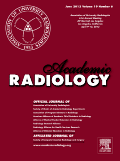
ACADEMIC RADIOLOGY
Advancing the Frontiers of Radiological ScienceACADEMIC RADIOLOGY, published by Elsevier Science Inc, is a premier journal in the field of radiology, nuclear medicine, and imaging. With an ISSN of 1076-6332 and an E-ISSN of 1878-4046, this journal has established itself as a vital resource since its inception in 1994, featuring high-quality research that continuously shapes the landscape of medical imaging. Ranking in the top quartile (Q1) for its category in 2023, ACADEMIC RADIOLOGY boasts an impressive Scopus ranking of #38 out of 333, positioning it in the 88th percentile among peers. This journal is dedicated to advancing knowledge through original research articles, review papers, and case reports that highlight innovative techniques and technologies in radiology. Although it does not offer open access, it remains a go-to publication for professionals and students seeking to stay abreast of the latest developments and best practices in the field, ensuring that its contributors and readers are at the forefront of radiological science.